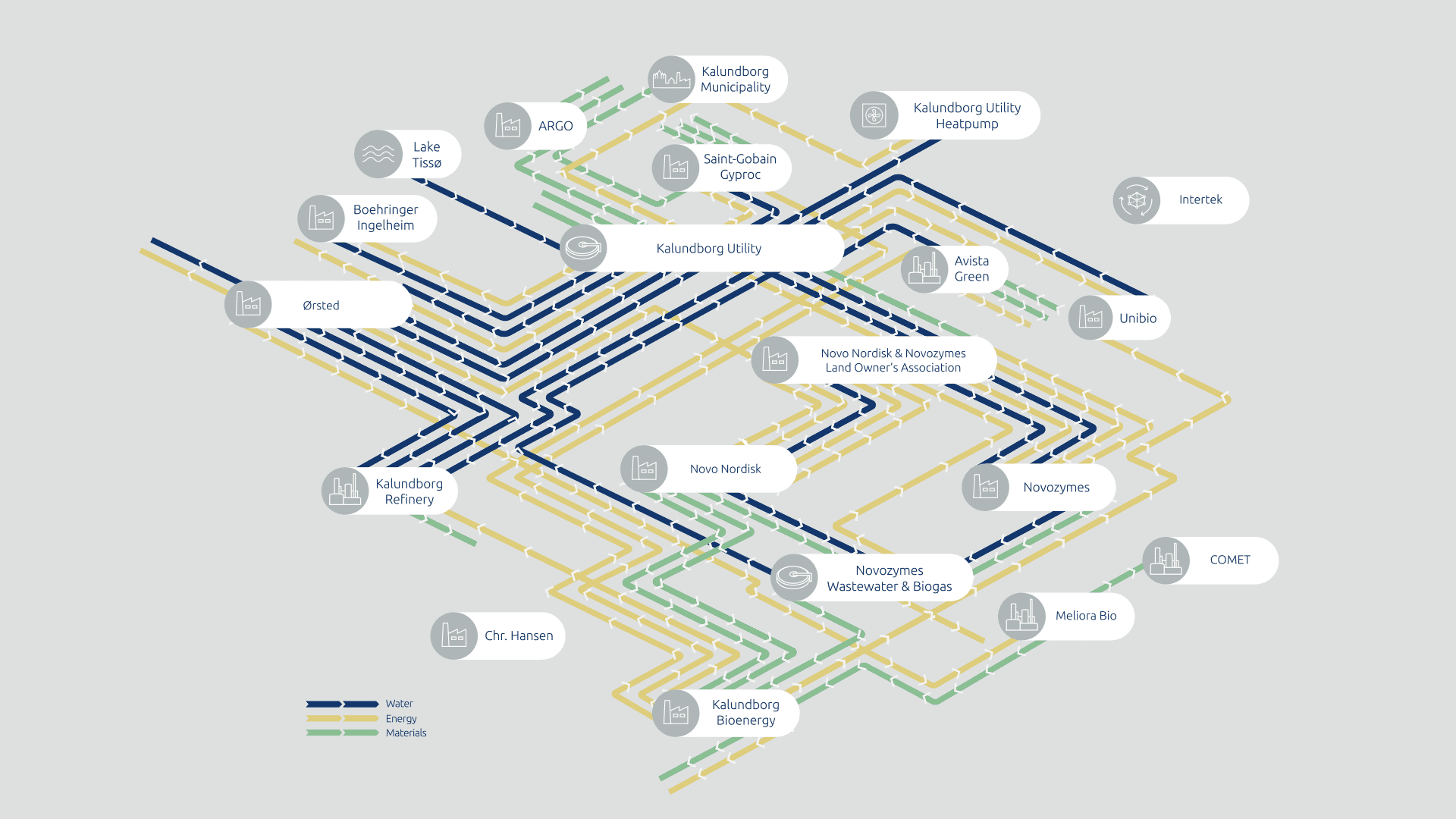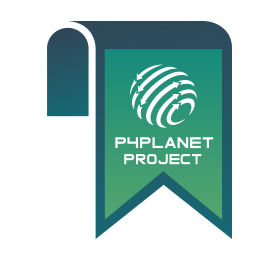We spoke with Per Møller, one of the founding members of the H4C Community of Practice.
Can you briefly describe your role at Kalundborg Symbiosis?
Kalundborg Symbiosis is a partnership between seventeen public and private companies in Kalundborg. The main principle is that a waste stream in one company becomes a resource in another, benefiting both the environment and the economy. The symbiosis creates growth in the local community and supports the green transition. Kalundborg is quite unique in that we are not an industrial park. We build local symbioses around small industrial sites.
I am part of a team of four facilitators at Kalundborg Symbiosis. Our role as facilitators is to help the industrial park on its path towards a systemic collaboration towards climate neutrality. We work closely with the board of directors in the partnership on renewing our vision and mission, an action plan and a road map and support different working groups. I work on a number of national and EU projects and am a co-founder of the “Nordic Network”, a network of practitioners, partnerships, facilitators and academia partners working towards expanding the industrial symbiosis concept towards collaborations with urban players.
At Kalundborg Symbiosis, we have a membership fee which is complemented by revenues from consulting, host a visiting center and participate in national and international funded projects. We also help other regions to initiate new hubs and support the Government in “exporting” our industrial symbiosis concept. We help them deliver on green solutions in the context of the EU taxonomy framework. For example, the ministries have strategies regarding export and decarbonization, where they have signed contracts with various partners. Furthermore, we help technology providers understand the concepts of I(U)S and CE collaborations, to establish smart partnerships, co-investment, and infrastructure solutions.
Can you tell us a bit about how you go about establishing a successful I(U)S/CE collaboration? Which stakeholders are involved, what is the role of the facilitator?
There are basically two sides to this. On the one hand, the member organization themselves identify opportunities for new green business models (symbiosis projects) in the partnership and approach us to discuss their ideas. On the other hand, we actively engage in dialogues, in particular with new players, listen to what it is they might need. We try to get a picture of what’s happening, then initiate matchmaking with local industries we know. We facilitate the initial contact – they then move towards bilateral discussions. For example, a pharmaceutical company was paying for the disposal of a waste product, which is now fed into a biogas plant. Our role is to make people aware of these new opportunities and to facilitate processes to support proof of concept and implementation of these.
Kalundborg has been around for more than 50 years and has developed an international reputation for industrial (urban) symbioses. How have the overall challenges / topics developed over the last 50 years?
On the one hand, the topics we have in focus are evolving. In the beginning, individual companies found ways of collaborating to solve challenges and turning them into opportunities. For example, a refinery needed cooling water, and as drinking water was a scarce resource, an alternative solution was found in substituting this resource with a residual stream from the nearby lake. The municipality owning the utility partnered up with the refinery in implementing this new infrastructure alleviating the pressure on groundwater. Another example from the earlier days is the use of sulphur dioxide emissions in a coal-fired power plant to make gypsum, instead of mining and importing it from e.g. Morocco[1]. Currently, one of our main issues is water. Industry is expanding in the region – new players want to come work with us. Therefore, the need for water – and electricity – is increasing in the area. We need to balance these requirements with the demand for drinking water, and carefully coordinate infrastructure development. Other current topics are carbon capture and utilization, as well as Power-to-X. Partnerships are important to set up strong businesses and to work more effectively.
On the other hand, the conceptual way of working together has also evolved over time. Collaborations have to be worthwhile for all partners from an economic point of view, of course. However, more recently, benefits in terms of environmental and social KPIs are becoming more and more important. Previously, payback times for investments were crucial decision factors. Now, we are seeing longer pay back times being acceptable if the collaborations come with other benefits such as e.g. being able to secure water resources or profiting from educational programmes. Many different KPIs are now relevant besides the financial ones.
Can you talk a bit more about those KPIs?
The KPIs are identified by the companies themselves, based on their own strategies supported by their shareholders. We are currently trying to develop a data management strategy to ensure efficient access to information, and to be able to come up with common KPIs relevant to all our players. The companies can easily measure KPIs directly related to their own activities. We provide additional support through the realization of partnership models and derived synergies through IS projects.
Companies who come together with a common green business model usually benefit from the collaboration regarding at least one of their KPIs. There are usually a few common KPIs, e.g. productivity measures per unit produced, the carbon footprint per unit produced, etc., but also company-specific ones. We also develop new KPIs through dialogue with the companies. For example, the collaborations often bring about environmental benefits and employment opportunities for the community. Social aspects are also important – for example, we have arrangements for people who cannot work full-time. We are continuously learning from these collaborations – the challenge is to engage all the relevant companies in the discussion. We want to show them that we can assist with their challenges – to do so, we need to understand their business needs.
What is Kalundborg Symbiosis looking for in the collaboration with the Community of Practice (thinking about features of the Knowledge Platform, other exchanges)?
We are happy to share the knowledge, conceptual approach, tools and processes we have in-house with the Community. In turn, we would like to learn from the community of practitioners and from knowledge institutions – and develop our tools together in collaboration with them.
To be concrete: We are developing a strategy for the management of industrial symbiosis data. We hope to be working with a PhD candidate to develop an approach which considers both scientific considerations and the practitioners’ approach and requirements. We would like to consider insights from other hubs regarding the development of such tools. For example, we want to understand how to best manage the data collected, and how to agree between partners on data handling, including policies for data sharing. In a next step, we need to come up with an architecture for the data. We build on existing approaches and create a special symbiosis model that will help us share data. With the help of such a tool, we could become smarter: We could optimize the way we communicate and share information with others. We could detect underutilized resources as a basis for the establishment of new collaborations. It would help us with KPI reporting, too. We could store results of material compositions, sample analytics. We could use it to estimate amounts of resources needed (e.g. water of quality x) and required infrastructure. The tool should have options for planning and dialogue between users, to achieve a next level in trust-based collaborative partnerships. It could also be a matching tool to link organisations to relevant activities, infrastructure investments and resource potentials. The tool could comprise of different graphical layers and illustrate the ecosystem the respective user is part of. It could make suggestions for green business models and help with concrete steps towards their realization.
The tool could be used in different regions, different hubs. The main caveat may be having a solution which people sufficiently trust to share their confidential data. However, even pharma companies are now starting to open up in terms of data sharing, since they see the potential benefits and urgencies of developing collaborations. It is even thinkable that interfaces between different hubs could be created in future. At the moment, this is still tricky to do – but in the future, it could happen.

Source of Infographic: www.symbiosis.dk
Photo: Per Møller, Kalundborg Symbiosis
[1] With the plans to move away from coal, larger amounts of gypsum from geological sources will be required again – see e.g. https://www.cleanenergywire.org/news/germanys-gypsum-supply-threatened-coal-exit-report, https://www.klimareporter.de/gebaeude/gips-wird-knapp,


